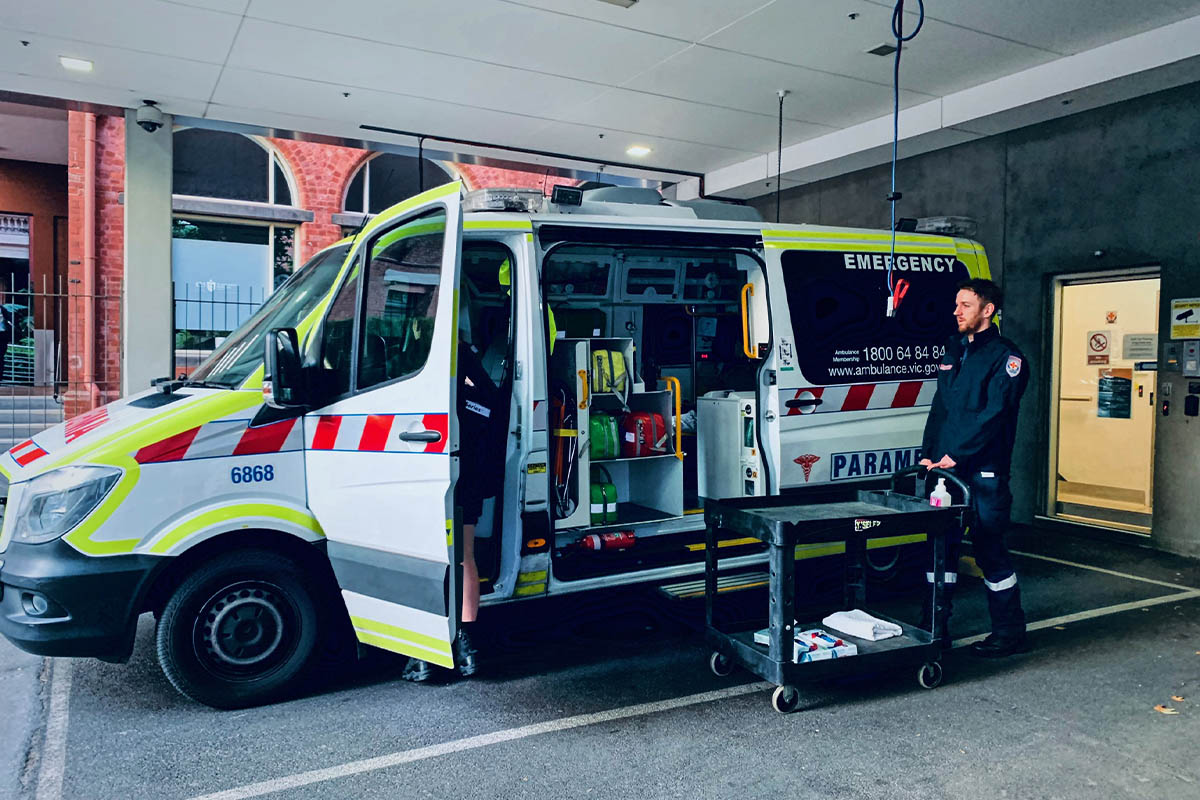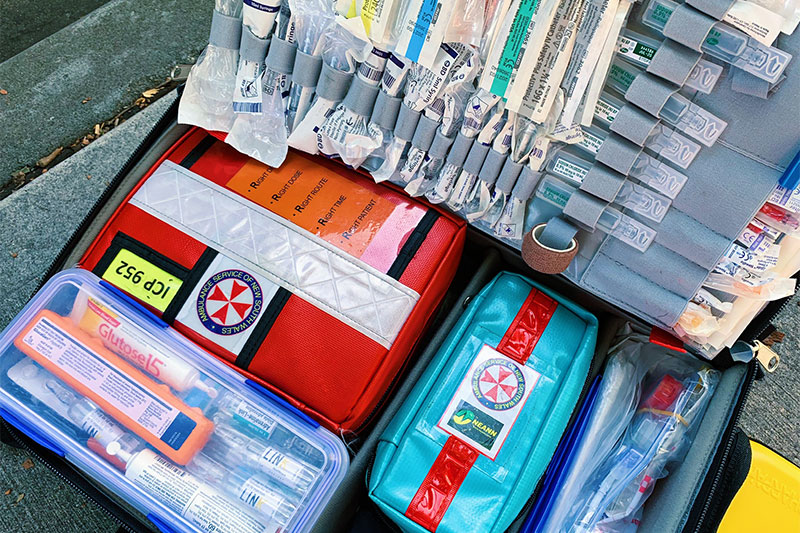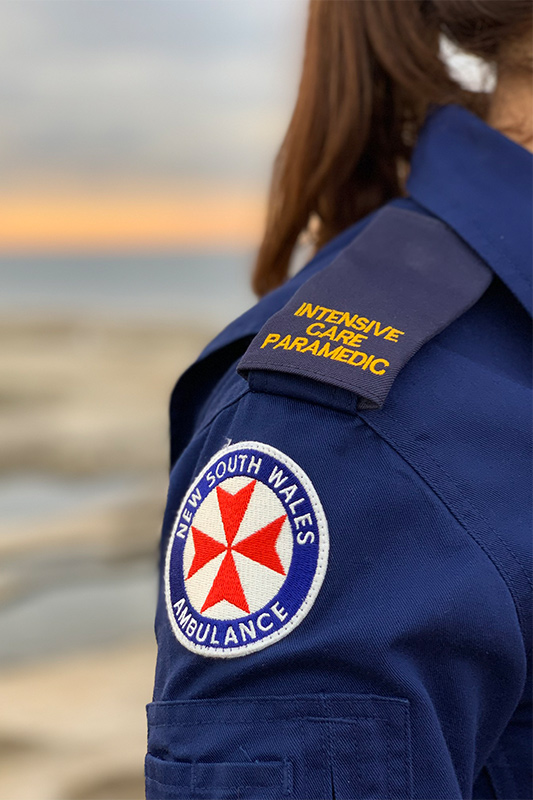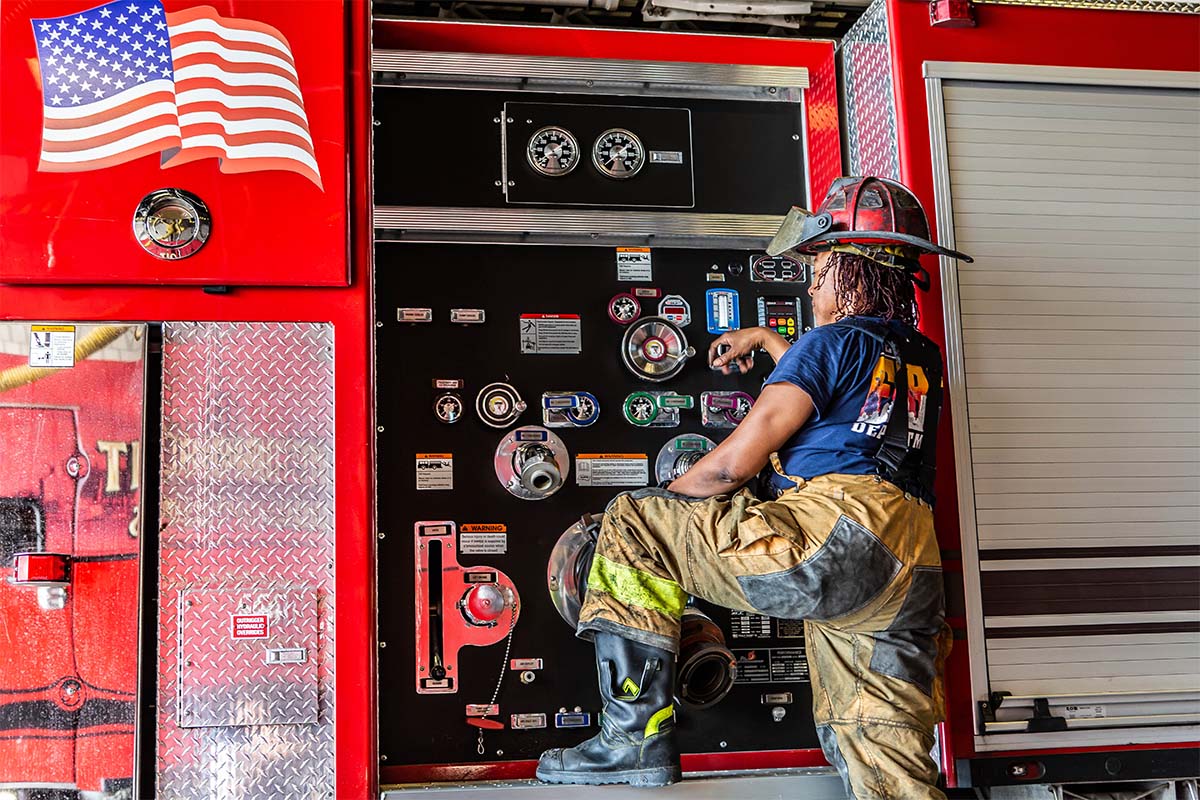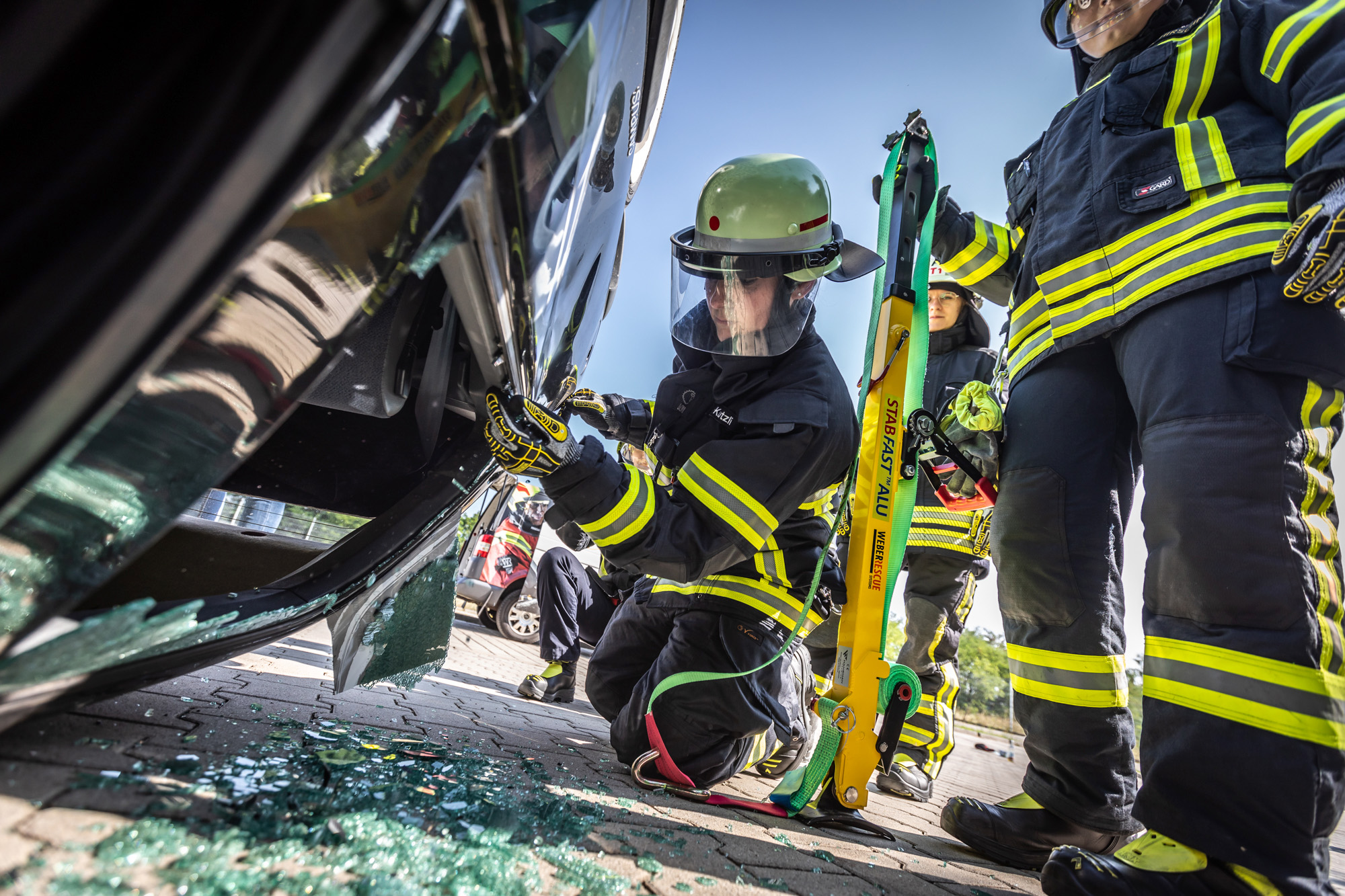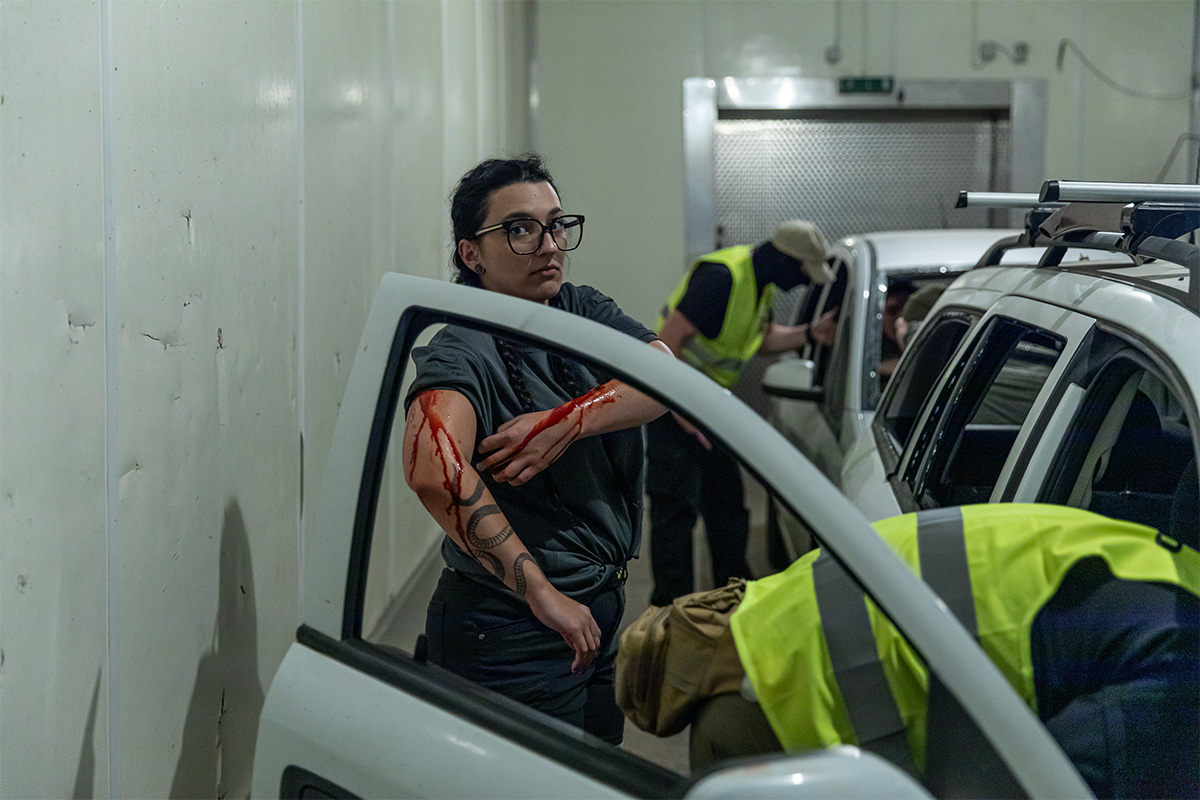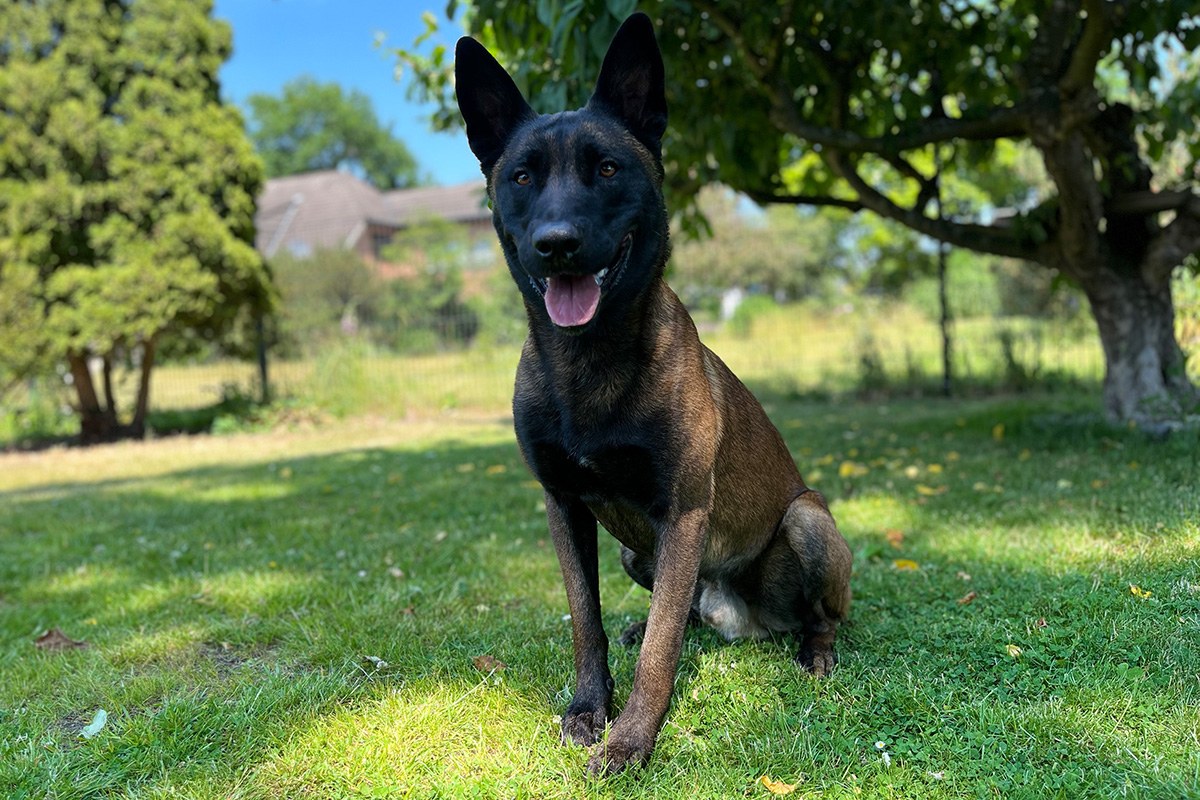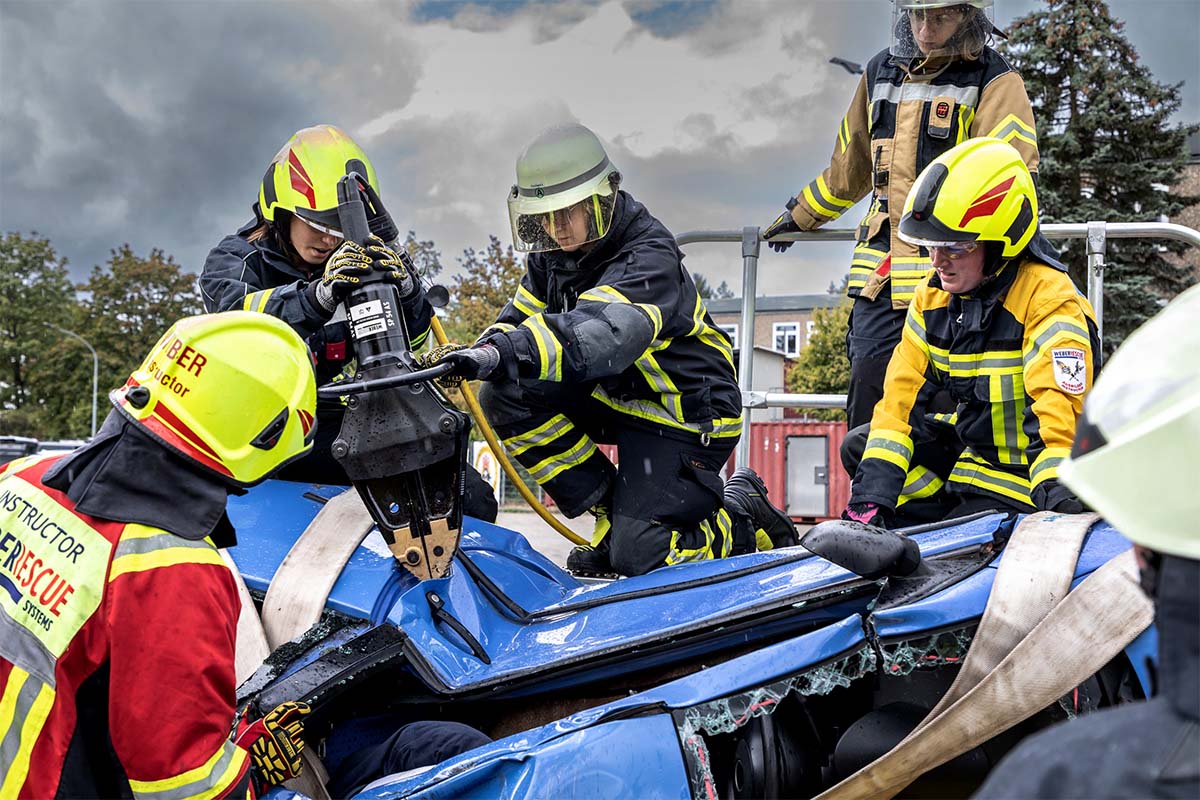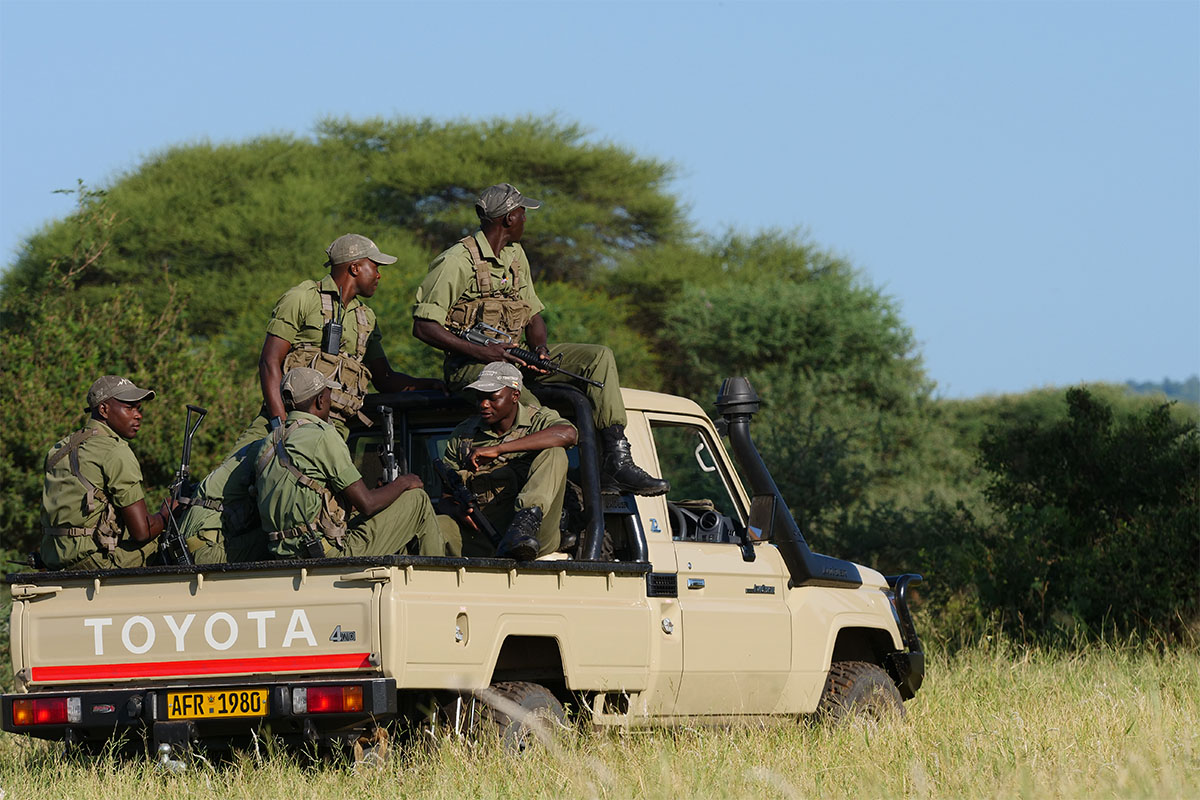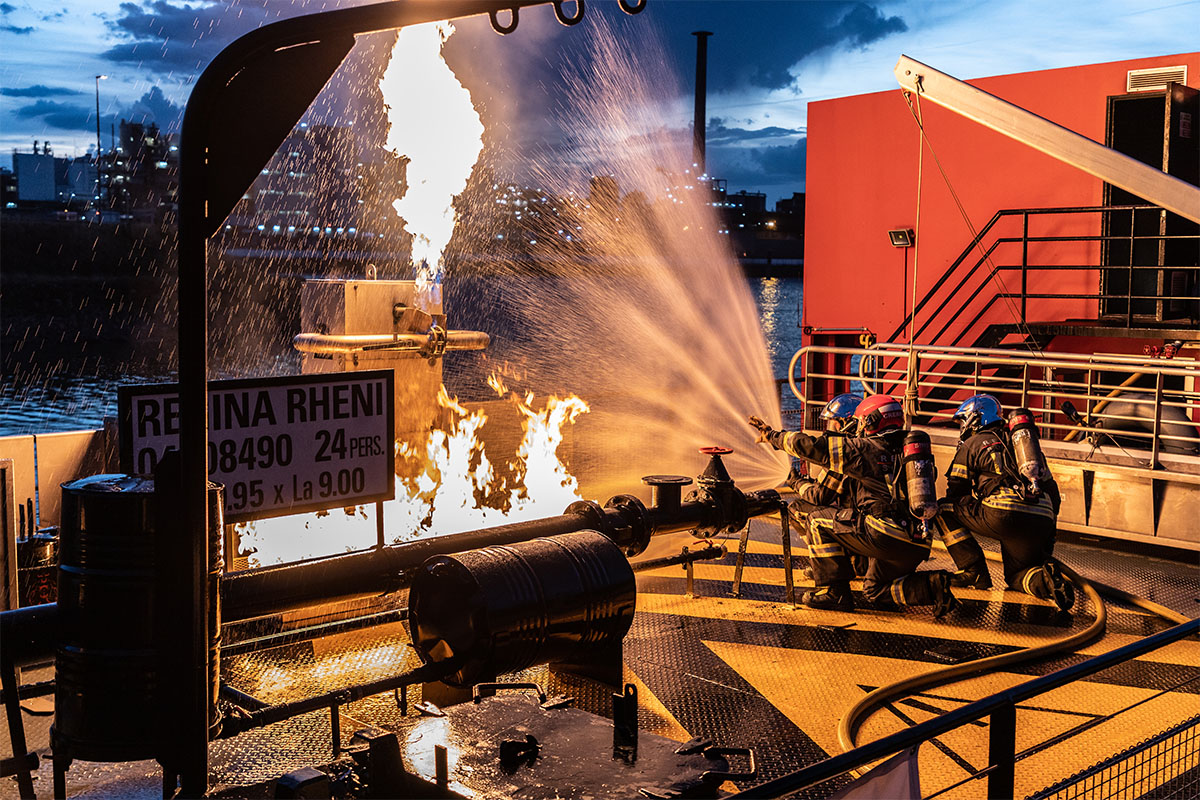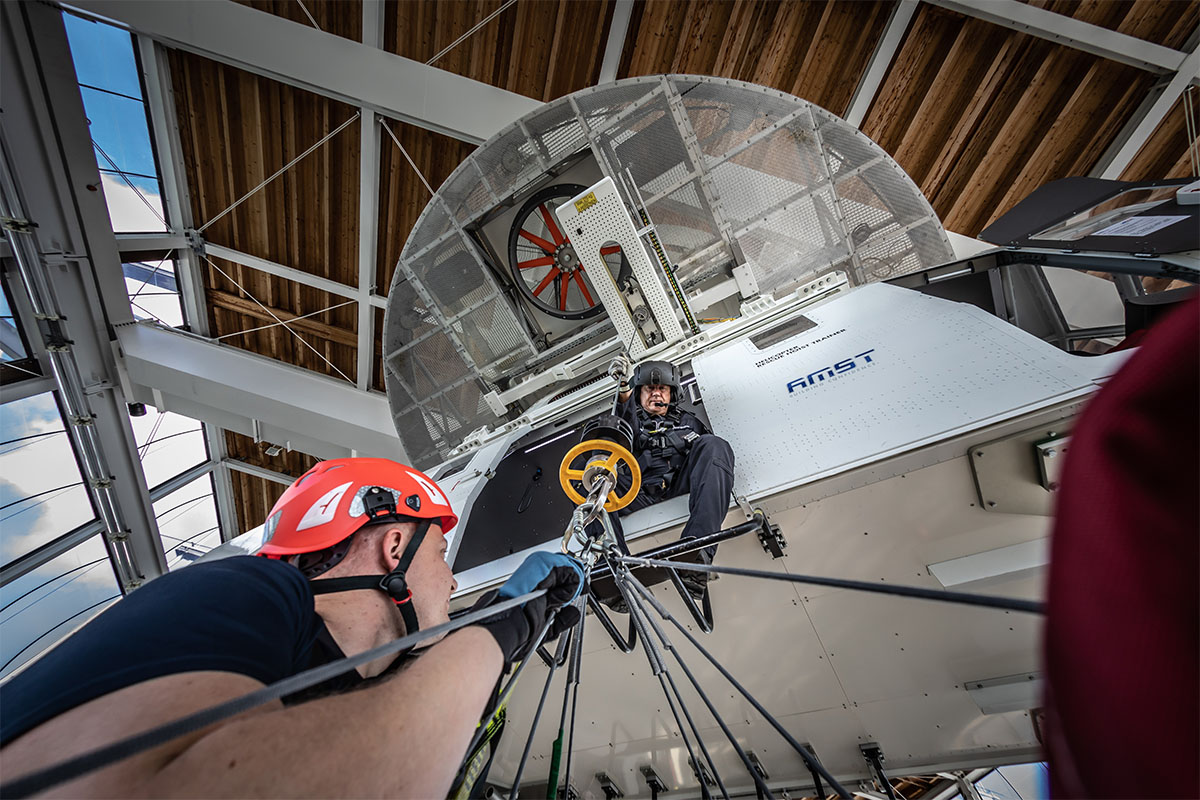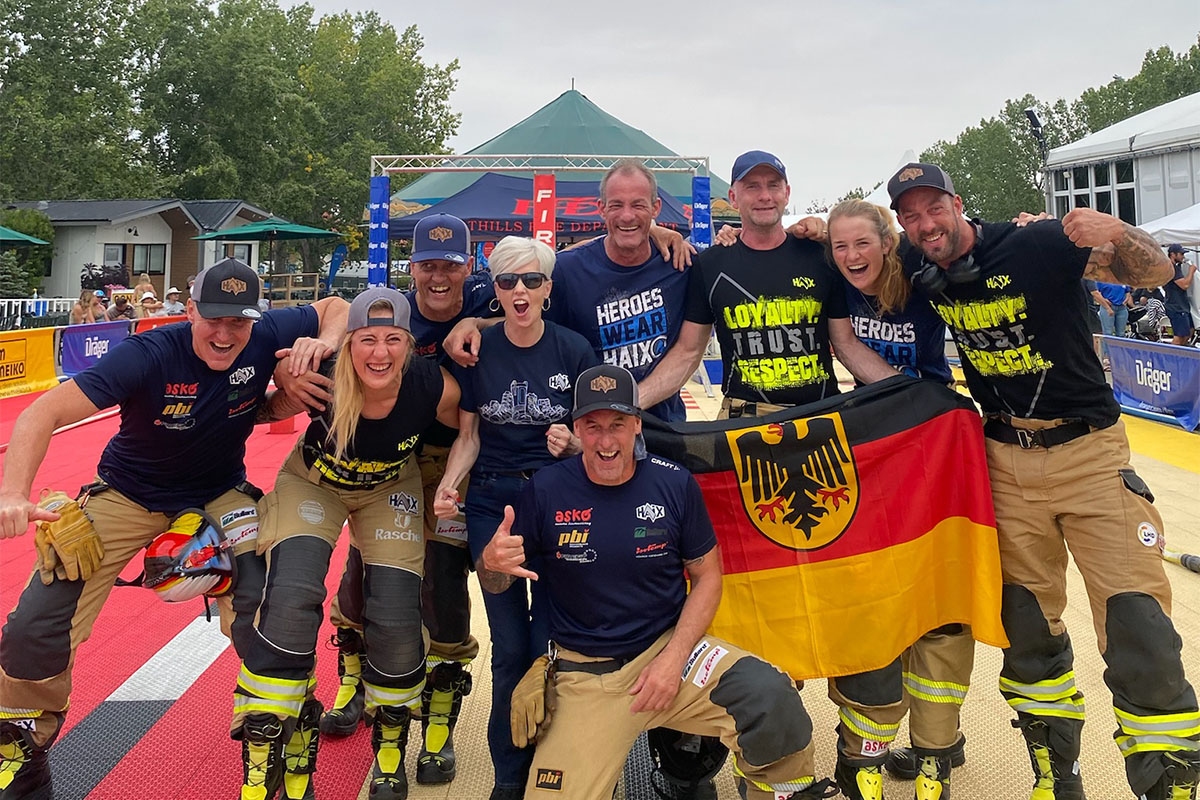Viennese Volunteer in Emergency Paramedic Internship
Daniel Kogler is a passionate Paramedic with the Vienna Ambulance Service. He has been traveling the world to gain new experiences of how emergency rescue workers operate in different countries. He recently completed a four-week internship in Australia, where he spent time with different ambulance services.
An internship in Australia: The diary of a paramedic
I immediately find Melbourne to be my personal favorite amongst the cities I have visited in Australia. It is a young and vibrant place with a good contrast between lots of modern skyscrapers and attractive older redbrick buildings set in narrow streets. There is also a great food scene, and people are very friendly and approachable.
Andrea has been a paramedic for 30 years. She has spent the last 25 of these with the Mobile Intensive Care Ambulance as a “MICA Paramedic”. Back in the day, Andrea became only the second woman to join Ambulance Victoria. The service now employs 2,500 paramedics in Melbourne, 46 percent of whom are women.
Andrea provides me with some advice for my first deployment on a (MICA) Single Responder based at Epworth Richmond Hospital. She also tells me about the training that paramedics in Australia undergo. The starting point is a three-year degree course in Paramedic Science. Before students embark on any further studies, this university-based element of the programme is immediately followed by a one-year period of practical training comprising work experience with the Emergency Ambulance and a clinical internship. Candidates must complete a further two years of practice as an Ambulance Paramedic before they are permitted to proceed to a one-year Masters course of study leading to qualification as a MICA Paramedic.
Together with Andrea, I visit Victoria Ambulance’s Mobile Stroke Unit (MSU) at a nearby hospital. This consists of a roving intervention unit which is able to go out to patients if required. It is staffed by a neurologist, a radiology technologist, two paramedics and a specialist neurological nurse. I find it fascinating to see such a unique interdisciplinary emergency medical unit.
I spent a great and highly instructive time at Ambulance Victoria. They are a highly professional and modern outfit. This is the best emergency medical service which I have come across so far, but there are still two to go!
First of all, however, time for a little relaxation. Three days on Phillip Island.
Next Deployment – an ambulance in Brisbane
Emergency Ambulance 5105’s shift begins at 7:00 am. After a few initial jobs, we get a call to transport a patient needing intensive care from a nearby small airport to a specialist clinic in the city. The patient is being brought in on a jet belonging to the Royal Flying Doctor Service, a state-subsidized organization which ensures that people in the thinly populated outback who require medical treatment can be provided with transport. Our destination today will be the Brisbane Major Trauma Centre. The Flying Doctors sometimes simply offer medical advice over the radio, by telephone or via video chat (available 24/7).
Ambulances in all of the federal states of Australia have very similar set-ups and equipment. The cabin is a bit smaller than we are used to, but everything is well thought out. The driver has plenty of room, and shelf space is available right next to the area for the patient stretcher. There is a pull-out drawer with an integrated Toughbook. The type of laptop used to record documentation when out on a job is a swiveling Corpuls C3. A shelf holds an ECG monitor unit, whilst compartments below house a complete array of diagnostic devices and everything needed to administer medications intravenously. All of this is within easy reach, and the airways management area is also conveniently located right behind the head of the stretcher.
The structure of training is also virtually alike in all of the three states I visited. There are, however, noticeable differences in the way in which staff go out on deployment. Melbourne, for example, has a Bicycle Response Team (BRT). One colleague jumped off his bike to show me the equipment he carries. This was contained in a standard QAS emergency bag and consisted of an advanced airway kit, an AED (a defibrillator that can easily be used by laypeople), a small O2 flask and a minor and major trauma kit. He explained that he was always first on the scene when there were call outs to shopping centers, pedestrian zones or parks. His work is highly demanding physically because of the city’s countless hills and the tropical climate. But he just laughs when I mention this. “I get paid for working out, mate! How cool is that?!”
“HARU” and “LARU” are two further particular features of Queensland Ambulance. “ACU” stands for “Acuity Response Unit”, whilst the “H” and “L” (“High” and “Low”) differentiate the spectrum of the operations undertaken. The HARU is a special vehicle for trauma patients. It is staffed by specially trained paramedics and experienced emergency medics. This means that procedures such as thoracentesis and cricothyrotomy can be performed on the spot. Extended diagnoses can also be given, thus enabling patients to be taken right to the operating theater instead of wasting the valuable minutes that can make the difference between life and death by waiting in emergency admissions.
By way of contrast, the Low Acuity Response Unit (LARU) is operated by a paramedic with extended training in general diagnostics. The LARU is mainly sent out to patients for whom treatment at home seems to be a viable option. It can also be dispatched to other departments in the healthcare sector (such as GP surgeries, primary healthcare centers and so forth). All of this saves costs and frees up the emergency medical services to perform their vital work.
Intensive Care Ambulance in Sydney
A change of scene. I take the bus from the hotel to Randwick to join an Intensive Care Ambulance. Everywhere I go, I am impressed by the warm welcome I get from all the colleagues I meet. I am greeted by Anna and Adam, two Intensive Care Paramedics in their mid-thirties. Once they have checked the ambulance, I am shown the equipment they use. We start of the day with a takeaway coffee from their favorite café. We then move onto nearby Bundock Park and the Clovelly Cliffs. This is Anna’s and Adam’s normal morning routine as long as no emergency call has come in before they go on shift. The feeling of watching the sun rise slowly on the horizon and hearing the rushing of the sea whilst holding a decent cup of coffee in my hand is simply incomparable. This is something I could get used to.
But the peace and quiet does not last for long, and the first call is upon us. Anna and Adam are a well drilled team and work with astounding precision. Nevertheless, they always take time to deal with patients in a caring way.
Whilst we are driving along, the pair tell me about an Austrian colleague of theirs from Tyrol, who emigrated to Australia 25 years ago and has worked for NSWA for the last 20 of these. And we actually get to meet him this very day! Joe, real name Josef, is an Intensive Care Motorcycle Paramedic. He cuts an unbelievably cool figure in his leathers and drives an impressive bike. Joe speaks perfect Australian slang with an unmistakable Tyrolese accent. We talk shop for a while, discussing the differences between Austrian and Australian emergency medical services. Joe also takes the time to show me his motorbike and his equipment and to explain what a typical working day is like. This was a real highlight of the trip! We exchanged details and agreed to meet up in Austria someday. As soon as we had done so, Joe was summoned by radio to his next job. He started up his bike, switched on his wailer and yelp siren and sped off.
Emergency medical care in Australia is something to behold. Patient transfers in the trauma room take place in a calm and structured way. Nobody intervenes in any way until the paramedic has finished and the Senior Emergency Physician, who stands on podium off to the side, has given the go ahead. The latter has everything under control and coordinates the whole team like a conductor directs an orchestra. The anesthetist waits at the head of the patient’s bed, whilst the nurses stand ready to the side. Everyone is in the right place and prepared for the task at hand.
The profession of paramedic enjoys great esteem down under. This respect is very noticeable when you are in public places, out shopping or fetching coffee. This is a source of great astonishment to me, and I catch myself speculating what I would need to do to leave my previous life behind and start a new career here in Australia. But the flight ticket back to Vienna has already been booked.
You can read about Daniel’s experiences in South Africa in the article “Rescue Mission in South Africa“.
